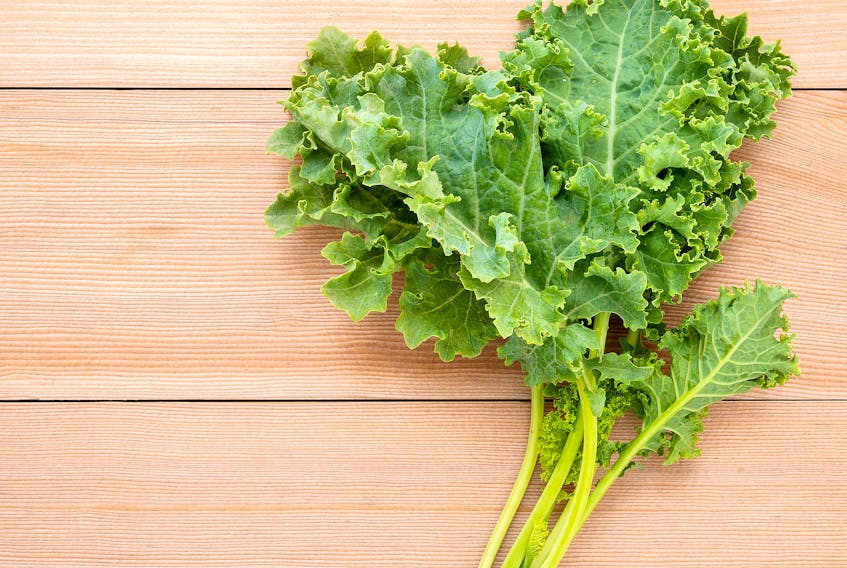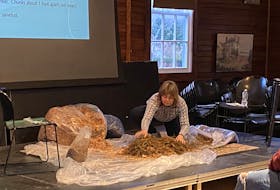Kale is a versatile, locally-grown, reasonably inexpensive winter vegetable.
Because of its sturdiness, cold tolerance and high productivity, it is available throughout the winter. Of the many recipes that use kale, the majority that I have found involve combining kale with some combination of potatoes, onions, a smoked meat such as sausage or bacon, white beans or sometimes an acidic ingredient such as balsamic vinegar. These combinations appear in dishes originating in Belgium, Germany, the Netherlands, Brazil and other countries.
For much of my lifetime, I only knew kale as a decorative plant that added colour to gardens and flowerpots long into the fall. I was ill-informed. Kale has been around for a very long time and has more culinary uses than it has decorative ones.
It is believed to be the first brassica – member of the cabbage family – that was cultivated. Fossils of kale-like vegetables, stored in ceramic containers and dated to 4,000 BCE (before the common era) have been found in Shensi province of China, and it is known that the ancient Egyptians cultivated a type of kale.
The sturdy stalks of kale are featured in an Irish tale about fairies riding around on kale stalks in the dim light of the new moon. Apparently, when a farmer finds his kale leaves tossed about in the early morning, he can take it as a sign that his crops, having been blessed by the “kail fairies”, will grow abundantly.
When households in Britain, Ireland and Scotland were encouraged to grow Victory Gardens to supplement the foods that were limited by wartime rationing, kale was promoted as an easy-to-grow and nutritious vegetable.
Curly kale, the most commonly seen variety of kale, is by no means the only one. You can find seeds for kale of many sizes, shapes and colours in seed catalogues, for example broad-leaved Tuscan kale, and flat-leaved Russian kale. Admittedly, my experience in cooking kale is limited mainly to curly kale and kale microgreens, but research tells me that most varieties of kale can be used interchangeably in cooking.
In preparation for a class on cooking the Brazilian dish Feijoada Completa, a meal of assorted smoked and fresh meats with black beans and other accompaniments, I learned that kale is a traditional component of the meal. For the class, we are sautéing the kale in butter; in a recipe I found for this Brazilian meal, the leaves, minus tough stems, are shredded into strips about 5 mm (¼ inch) wide, blanched in boiling water, drained well and cooked in a generous amount of bacon fat until tender and flavourful.
Sharon Hanna’s The Book of Kale: the easy-to-grow superfood (Harbour Publishing 2012) appeared when kale had superfood status. That’s a term I don’t appreciate, as there is a faddish quality about it. Today it finds glamour in its status as superfood, and tomorrow it will be replaced by the next superfood. Kale deserves to have an enduring place in our meals, and Hanna has developed and collected a variety of ways to prepare it and keep it interesting.
Here, from Hanna’s book, is a side dish to serve with pork or poultry or even as a luncheon dish with a chewy roll. She says the dish is most colourful when made with Tuscan kale, but I find that it is good made with the more easily found curly kale.
Kale with Apples, Leeks and Feta
From Hanna, Sharon: The Book of Kale, Harbour Publishing Co. Ltd., Madeira Park, B.C., 2012.
- 250 mL (1 cup) leeks, sliced, including some green
- 45 mL (3 tbsp) olive oil, divided
- about 1 L (4 cups) kale, ribbon-cut into strips
- 1 large tart apple, cored but unpeeled and quartered
- lengthwise, sliced into thin wedges
- 180 mL (¾ cup) crumbled feta cheese
- black pepper
Stir-fry leeks over medium heat in 30 mL (2 tbsp) of the olive oil until they soften – about 2 minutes. Add kale and continue to stir-fry about 4 more minutes.
Turn up the heat to medium-high. Toss in apple slices and continue to cook, stirring frequently for about 3 minutes until apples are tender but not limp.
Add feta, grind in a little pepper and toss lightly.
Serve drizzled with remaining oil.
Makes 4 servings
Margaret Prouse, a home economist, writes this column for The Guardian every Friday.









